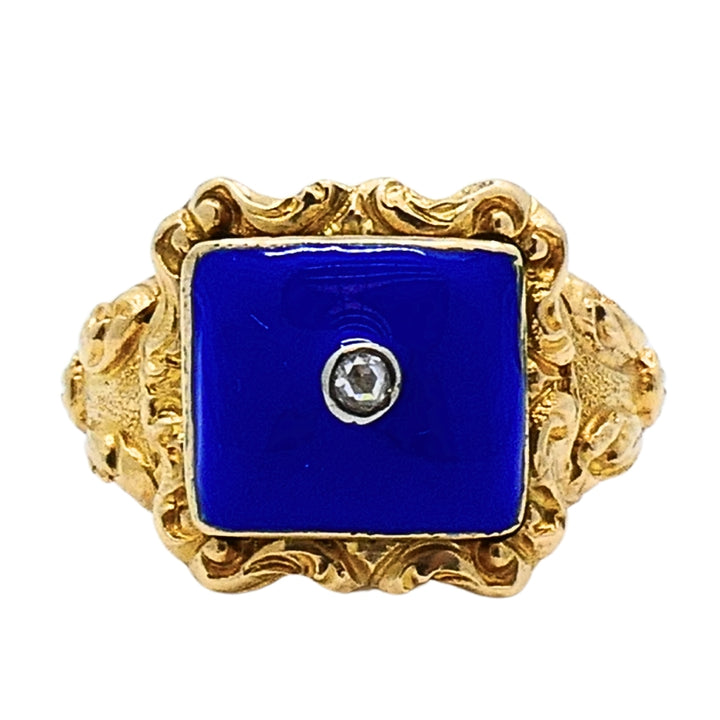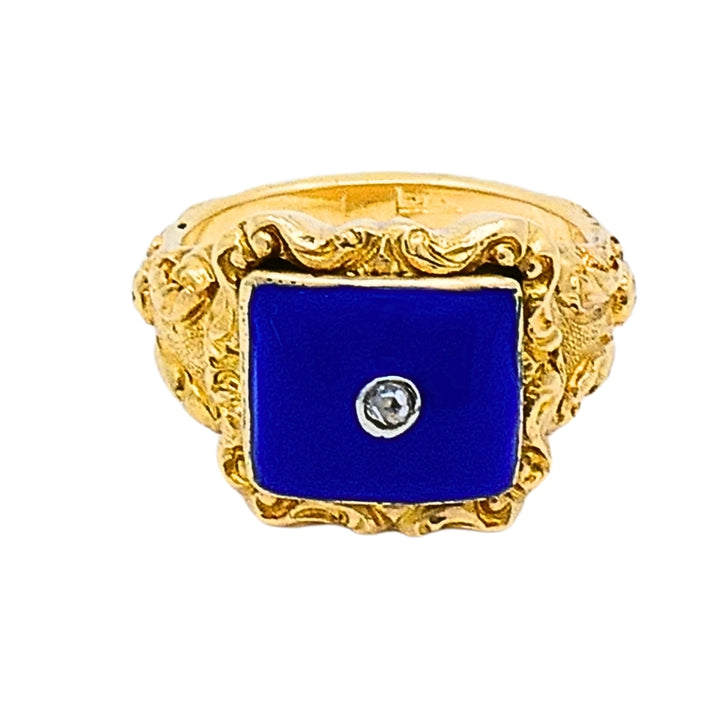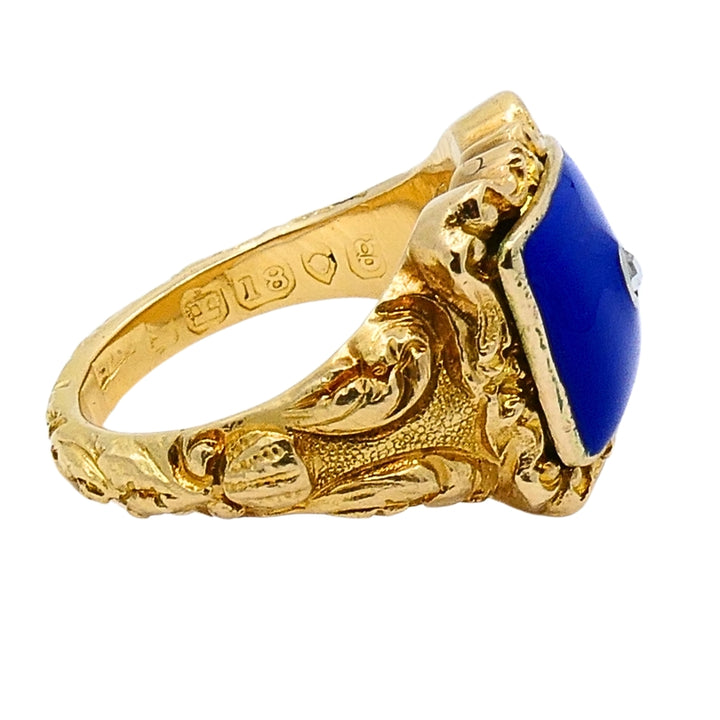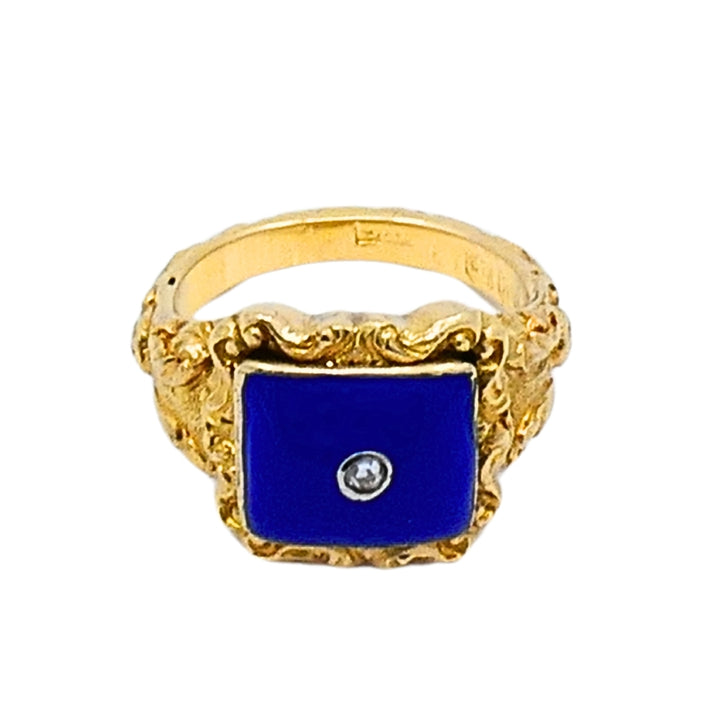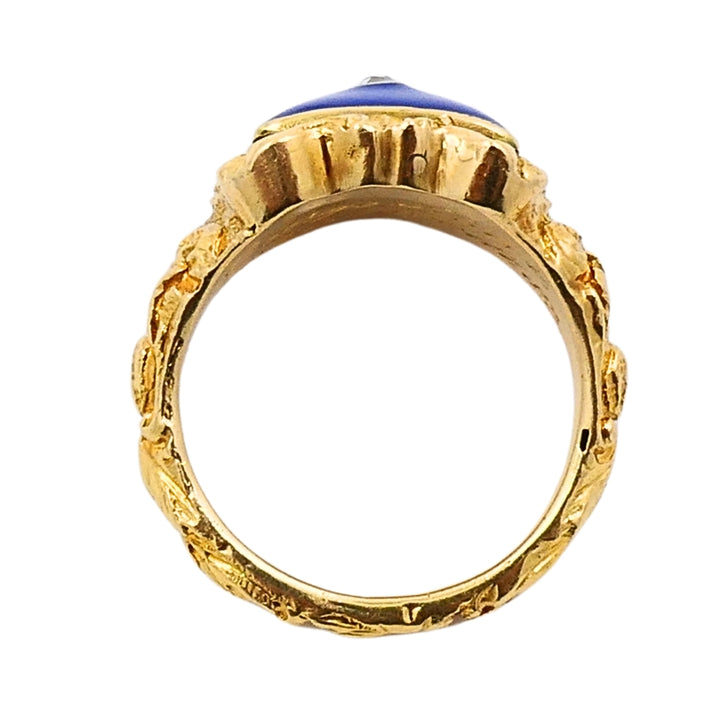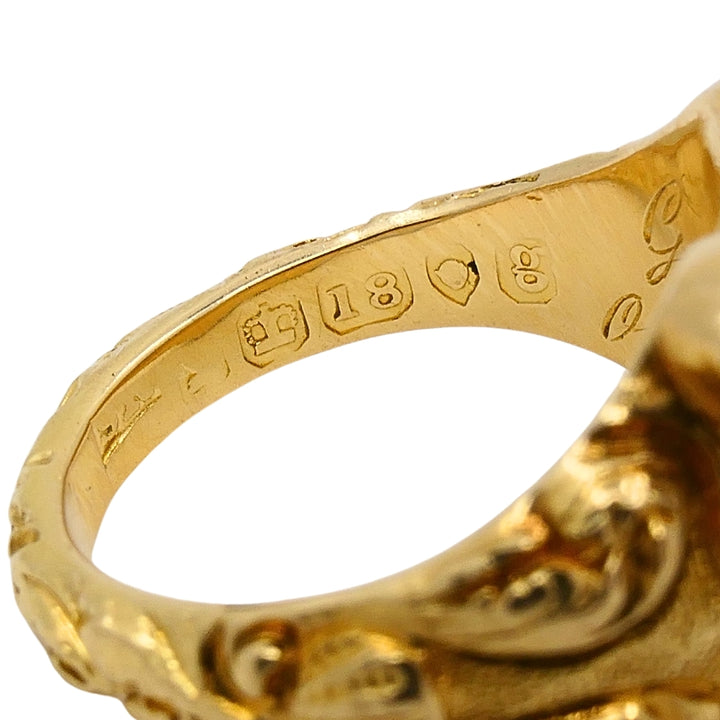Sign up today and we'll send you a 10% discount code towards your first purchase.
4381 - R00
A striking Georgian ring made of 18k gold, featuring lapis lazuli and diamond. This lapis lazuli ring is square shape, with the band featuring intricate carved detailing. The ornate shank is decorated with swirling foliate motifs and textured patterns. The gold’s hue is complemented by a deep blue lapis lazuli centerpiece, cut into a bold shape. A single diamond flush set within the lapis. Sith its detailed engravings, rustic feel and geometrical shape, this lapis ring carries the distinct character of the Georgian era.
Adult signature required upon receipt
Pick up in store available.
9454 Wilshire Blvd, Suite M-20,
Beverly Hills CA 90212
(310) 860-9991
Tues – Fri 11:30am – 5:30pm
Sat 10:30am – 4:30pm
Closed Sundays & Mondays
We accept returns within 3 business days of receipt, providing that the item is still in its original packaging and is free from damage.


